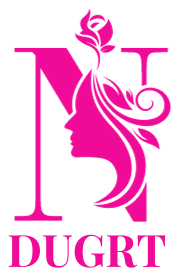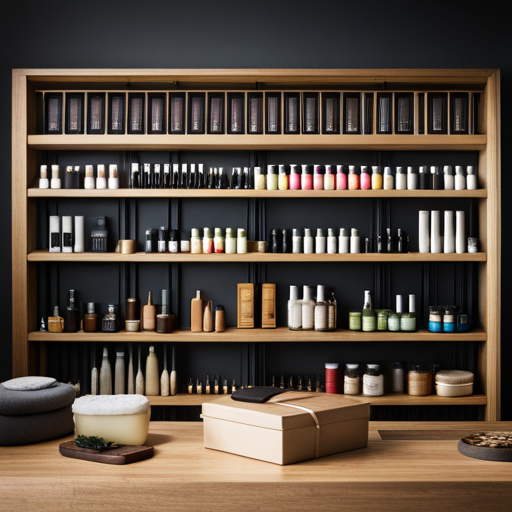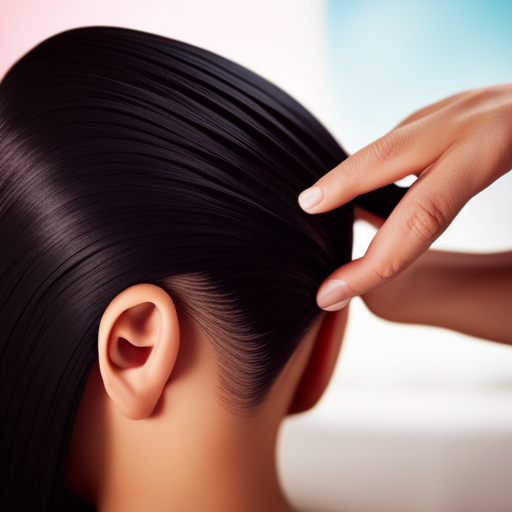Dealing With Hair Damage After Intensive Styling

‘Beauty is only skin deep, but the impact of intensive styling on hair goes much deeper. In this article, we delve into the common culprits of hair damage and explore effective strategies for repairing and nourishing your locks.
From split ends to moisture loss, we’ll provide expert guidance on how to restore your hair’s health and vitality. Whether it’s protective styling techniques or seeking professional help, we’ve got you covered in your journey to revive your damaged hair.’
Understanding Hair Damage
How exactly does intensive styling contribute to hair damage?
Intensive styling, such as heat styling, chemical treatments, and tight hairstyles, can lead to hair damage in various ways. Excessive heat from styling tools can strip the hair of its natural moisture, making it dry and brittle. Chemical treatments, like bleaching and coloring, can weaken the hair shaft, leading to breakage and split ends. Additionally, tight hairstyles, such as ponytails and braids, can cause tension and breakage, especially if worn frequently. Understanding these factors is crucial in preventing damage and maintaining a healthy hair care routine.
To prevent damage from intensive styling, it’s important to use heat protectant products when using hot tools and to avoid excessive heat exposure. Regular deep conditioning treatments can help restore moisture and strengthen the hair. When it comes to chemical treatments, it’s essential to follow the instructions carefully and seek professional help when needed. Alternating hairstyles and avoiding constant tension on the hair can also aid in preventing damage. Developing a consistent hair care routine that focuses on nourishing and protecting the hair is key to combating the effects of intensive styling.
Identifying the Culprits
Intensive styling practices, including heat styling, chemical treatments, and tightly-worn hairstyles, have been identified as the primary culprits behind hair damage.
Heat styling tools such as flat irons, curling wands, and blow dryers can cause damage by stripping the hair of its natural moisture and weakening its structure.
Chemical treatments like bleaching, coloring, and perming can also lead to significant damage by altering the hair’s natural composition.
Additionally, tightly-worn hairstyles such as braids, ponytails, and extensions can exert excessive tension on the hair strands, leading to breakage and traction alopecia.
To prevent damage, it is essential to incorporate heat protection products before using heat styling tools and to limit the frequency of heat styling.
When identifying causes of damage, it is crucial to assess one’s hair care routine, including the products used and the frequency of chemical treatments.
Furthermore, being mindful of the tension exerted by hairstyles and opting for looser styles can help prevent unnecessary damage.
Nourishing Your Hair
To revive and strengthen damaged hair after intensive styling, it is crucial to nourish the hair with deep conditioning treatments and regular oil massages. Deep conditioning treatments are essential for replenishing moisture and nutrients, promoting growth, and preventing breakage. Look for deep conditioners containing ingredients such as keratin, biotin, and vitamins E and B to help repair and strengthen the hair shaft. Additionally, incorporating regular oil massages into your hair care routine can help nourish the scalp, improve blood circulation, and stimulate hair follicles, promoting healthy hair growth. Oils such as coconut, argan, and jojoba are known for their nourishing and strengthening properties.
Furthermore, to prevent breakage, it is essential to use a wide-tooth comb or a detangling brush when the hair is wet and most vulnerable to damage. This gentle approach can help minimize breakage and reduce stress on the hair. By incorporating deep conditioning treatments, oil massages, and gentle detangling techniques into your hair care routine, you can effectively nourish and strengthen your hair, promoting growth and preventing breakage.
In the subsequent section, we will delve into effective strategies for repairing split ends.
Repairing Split Ends
Repairing split ends is crucial for maintaining healthy hair. Trimming split ends regularly can prevent them from traveling up the hair shaft.
Deep conditioning treatments and protective styling techniques also play a key role in repairing and preventing split ends.
Trimming for Split Ends
One of the most effective ways to address split ends is by regularly trimming them, as it helps prevent further damage and promotes healthier hair. The frequency of trimming depends on the individual’s hair type and styling habits.
For those with minimal heat or chemical styling, a trim every 10-12 weeks may be sufficient. However, individuals who frequently use heat tools or undergo chemical treatments may benefit from trims every 6-8 weeks to prevent split ends from traveling up the hair shaft, causing breakage.
Regular trims also help maintain hair’s shape and prevent split ends from worsening. By addressing split ends promptly, the overall health and appearance of the hair are preserved, minimizing the need for extensive repairs in the future.
Deep Conditioning Treatments
An effective way to address split ends and repair hair damage after intensive styling is through the use of deep conditioning treatments. Deep conditioning treatments can help nourish and strengthen the hair, promoting overall hair health.
Consider the following options for deep conditioning:
- Home remedies, such as DIY hair masks using natural ingredients like avocado, coconut oil, and honey.
- Using specialized deep conditioning products that contain ingredients like keratin and argan oil for intensive repair.
- Applying preventive measures to minimize damage, such as using heat protectants before styling with hot tools.
- Regularly trimming the hair to remove split ends and prevent further damage.
By incorporating deep conditioning treatments and preventive measures, you can effectively repair split ends and promote healthier hair.
Transitioning into the subsequent section, let’s explore protective styling techniques to further minimize hair damage.
Protective Styling Techniques
Transitioning from deep conditioning treatments, implementing protective styling techniques is crucial for minimizing further damage and promoting hair repair, especially when addressing split ends. Protective hairstyles such as braids, twists, and buns help in reducing the manipulation and heat exposure that can lead to split ends. Here are some popular protective styling techniques and braiding methods that can aid in repairing split ends:
| Protective Hairstyles | Braiding Methods |
|---|---|
| Box Braids | French Braids |
| Twists | Cornrows |
| Buns | Dutch Braids |
| Ponytails | Fishtail Braids |
Moisture and Hydration
The restoration of moisture and hydration is crucial for repairing damaged hair caused by intensive styling. When hair is subjected to heat, chemicals, or tight styles, it can lead to moisture loss and damage, resulting in dry, brittle, and weak strands. To address these concerns, it is essential to focus on replenishing moisture and maintaining hydration levels in the hair.
Here are some key strategies for effectively restoring moisture and hydration:
-
Deep Conditioning Treatments: Regular deep conditioning treatments can help replenish lost moisture, improve elasticity, and prevent breakage.
-
Hydrating Hair Masks: Using hydrating hair masks with ingredients like coconut oil, shea butter, or aloe vera can deeply nourish and moisturize the hair, promoting overall health and resilience.
-
Balanced Hydration Techniques: Implementing hydration techniques such as the LOC (Liquid-Oil-Cream) method can help maintain the moisture balance in the hair, preventing breakage and promoting elasticity.
-
Repairing Damage with Moisturizing Products: Utilizing moisturizing shampoos, conditioners, and leave-in treatments can aid in repairing damage while keeping the hair adequately hydrated.
Protective Styling Techniques
To continue addressing the damage caused by intensive styling, implementing protective styling techniques is essential for minimizing further stress and promoting hair recovery.
Braided hairstyles are a popular and effective protective styling technique. Braids help to protect the hair by reducing manipulation and preventing breakage. By keeping the hair in a braided style, it is less exposed to environmental elements and friction, which can contribute to damage. Additionally, braided hairstyles can also promote hair growth by retaining length and protecting the ends from splitting.
Heat protection is another crucial aspect of protective styling. When using heat styling tools, it’s important to apply a heat protectant product to the hair to minimize the damage caused by high temperatures. This protective barrier helps to shield the hair from the direct impact of heat and reduces the risk of heat-induced damage such as dryness and breakage. Furthermore, incorporating heat-free styling methods, such as braiding or twisting the hair for natural waves or curls, can also minimize the need for excessive heat styling.
Incorporating these protective styling techniques can significantly contribute to the overall health and recovery of the hair, allowing it to regain strength and vitality.
Gentle Hair Care Practices
Implementing gentle hair care practices is essential for maintaining the progress made through protective styling techniques, ensuring that the hair continues to recover and strengthen. Here are some gentle hair care practices to aid in the repair and prevention of damage:
-
Regular Trimming: Schedule regular trims to get rid of split ends and prevent them from traveling up the hair shaft, causing more damage.
-
Moisturizing Treatments: Use deep conditioning treatments and hair masks to replenish moisture and strengthen the hair from within.
-
Gentle Styling: Avoid tight hairstyles and use hair-friendly accessories to prevent unnecessary tension and breakage.
-
Heat Protection: Prior to heat styling, apply a heat protectant to shield the hair from damage caused by high temperatures. Additionally, reduce the frequency of heat styling to give the hair a chance to recover and rebuild its strength.
Incorporating these gentle hair care practices into your routine will aid in the repair of damaged hair and prevent further harm, promoting healthier and stronger hair over time.
Seeking Professional Help
When it comes to addressing hair damage after intensive styling, seeking professional help is essential.
Consulting a hair care expert can provide valuable insight into the specific needs of damaged hair and the most effective treatment options available.
Professional treatment options, such as specialized hair masks or salon treatments, can offer targeted solutions to repair and restore damaged hair.
Consulting Hair Care Expert
Seeking professional help from a certified hair care expert can provide valuable guidance and personalized solutions for dealing with hair damage caused by intensive styling. When consulting a hair care expert, consider the following:
- Prevention tips, such as using heat protectant products and minimizing heat styling
- Salon recommendations for specialized treatments and services
- Hair care routines tailored to your specific hair type and concerns
- Product recommendations for repairing and nourishing damaged hair
By seeking professional guidance, individuals can receive personalized advice and effective solutions to address their hair damage concerns. This can help in preventing further damage and promoting healthy hair growth.
Transitioning into the subsequent section about ‘professional treatment options’, it’s important to consider the range of treatments available to restore damaged hair.
Professional Treatment Options
Upon consulting a hair care expert for personalized guidance, individuals can explore professional treatment options to restore and revitalize damaged hair. Professional treatments offer advanced solutions that may not be achievable through home remedies or DIY solutions. Here is a comparison of home remedies, preventing breakage, DIY solutions, and professional treatment options to help individuals make an informed decision about their hair repair journey.
| Home Remedies | Professional Treatment Options |
|---|---|
| Coconut oil and honey | Keratin treatment |
| Egg and yogurt mask | Scalp treatments |
| Aloe vera gel | Protein hair treatments |
| Avocado and olive oil | Deep conditioning |
| Rice water rinse | Hair botox treatment |
While home remedies and DIY solutions have their benefits, professional treatments conducted by skilled professionals offer specialized care and expertise, providing a higher chance of successful hair repair.
Frequently Asked Questions
Can I Use Heat Styling Tools on My Hair After Repairing Split Ends?
After repairing split ends, it’s essential to protect hair from heat damage. Using heat protectants and considering alternatives like air-drying or using lower heat settings can minimize further damage. Additionally, temporary and protective hairstyles can reduce heat exposure.
Are There Any Specific Vitamins or Supplements That Can Help Repair and Nourish Damaged Hair?
Dietary supplements play a vital role in hair repair and nourishment. Certain vitamins and minerals, such as biotin, vitamin E, and omega-3 fatty acids, support hair restoration. Natural remedies like aloe vera and coconut oil also aid in hair repair.
How Often Should I Trim My Hair to Prevent Split Ends and Breakage?
Regular trims are crucial in preventing split ends and breakage. The frequency of haircuts depends on hair type and styling routine. For most, every 6-8 weeks is ideal. Consult with a professional stylist to determine the best schedule for your hair.
Can Certain Hair Products Cause Damage Even if Used in Moderation?
Certainly, using certain hair products in moderation may still lead to damage. It’s crucial to choose products tailored to your hair type and needs. Regularly assess your hair care routines and seek professional advice for personalized hair product recommendations.
Is It Possible to Reverse Hair Damage Caused by Chemical Treatments?
Yes, it is possible to reverse hair damage caused by chemical treatments. Utilizing hair masks with nourishing ingredients and professional treatments such as keratin treatments or deep conditioning can help restore the health of damaged hair.
Conclusion
In conclusion, it’s clear that our beloved hair can suffer greatly from our styling habits. By understanding the causes of damage, nourishing and repairing our hair, and using protective styling techniques, we can work towards healthier locks.
Remember, a little TLC goes a long way in undoing the damage caused by our love for intense styling. So, take care of your hair, and it will take care of you!





